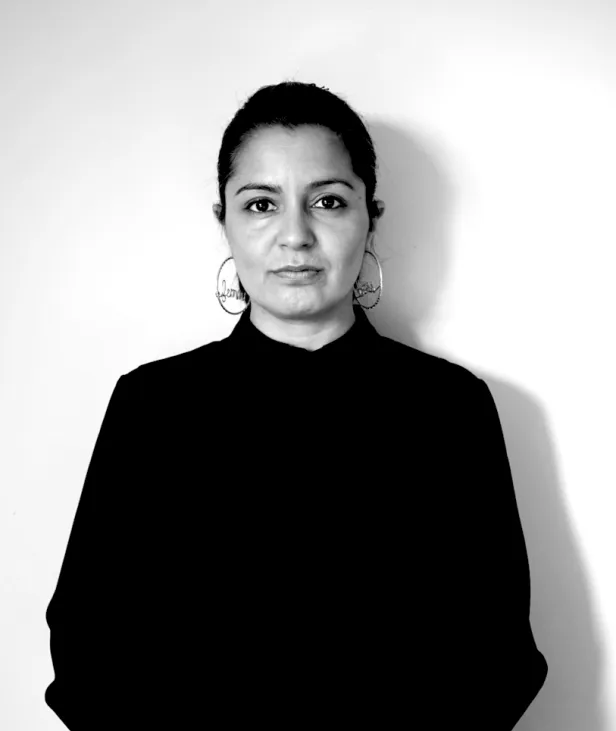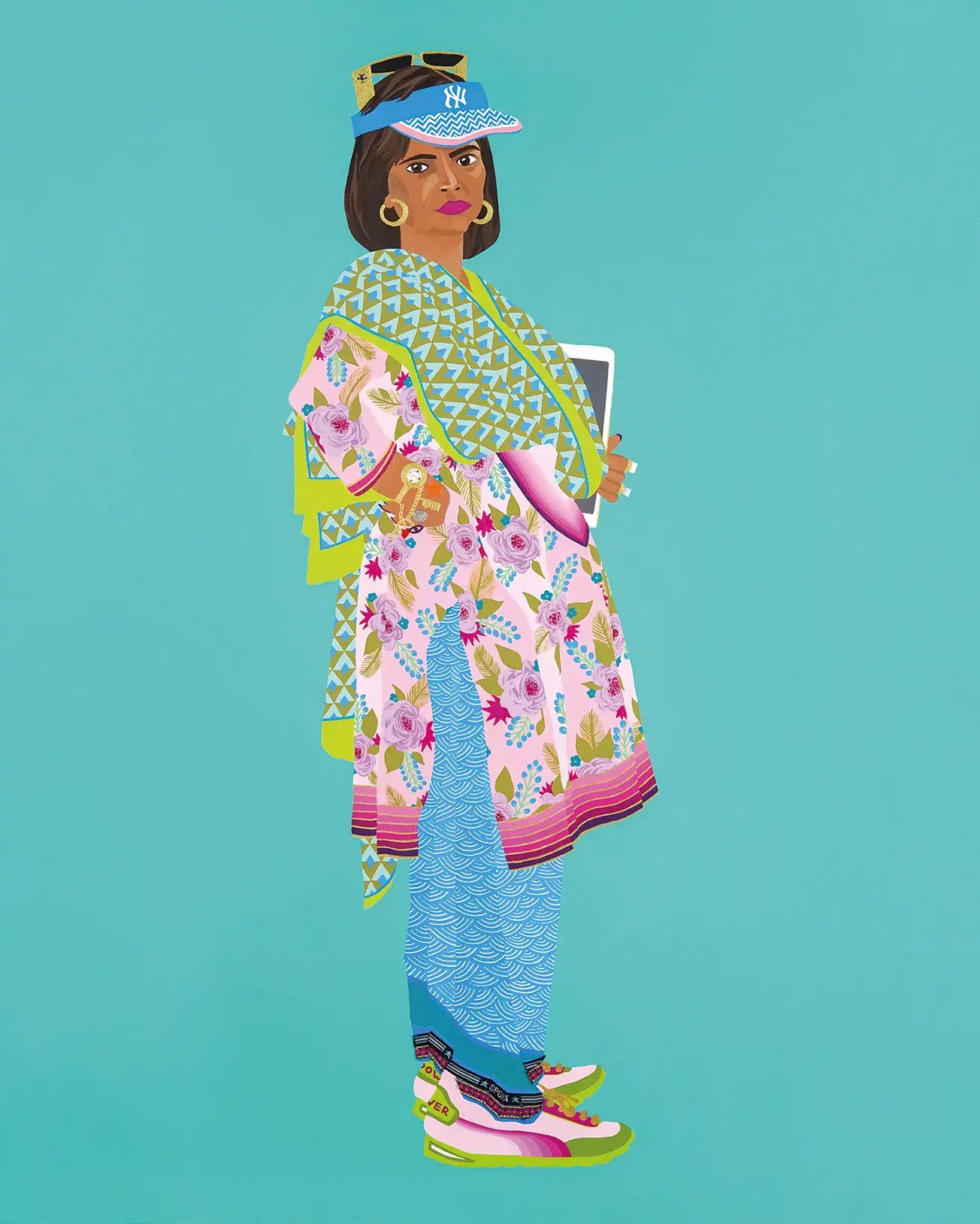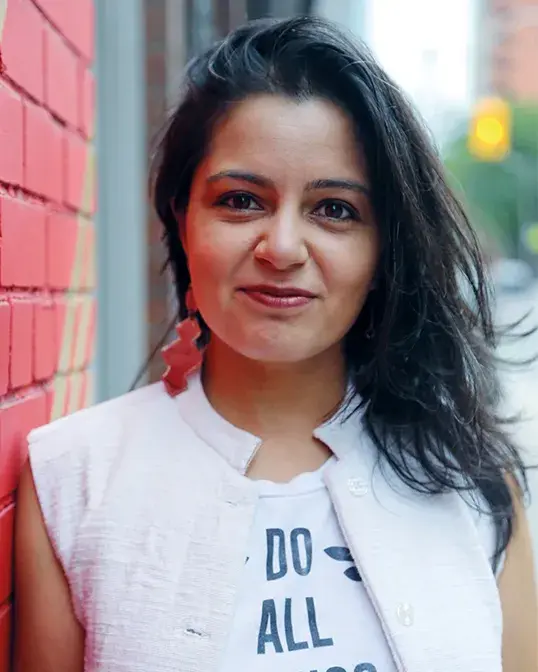(February 1, 2025) Migration isn’t just about moving from one place to another — it’s about navigating identities, cultures, and histories. For Meera Sethi, a Toronto-based artist who grew up balancing her Indian heritage with her Canadian upbringing, this experience shaped both her life and her art. Recognised with the 2018 Melissa Levin Emerging Artist Award, Meera’s work explores themes of migration, diaspora, and identity. “Art has the power to draw people in emotionally and intellectually,” she says. Her journey—straddling two cultures—gives her a unique perspective on belonging and self-expression.
Between Two Worlds: From India to Canada
Born in New Delhi in 1975, Meera’s life took a major turn when her family moved to Toronto when she was just two years old. They were seeking better opportunities and, more importantly, medical care for her mother. In their new home, her father worked hard to build a business while facing racism, and her mother battled breast cancer. These challenges shaped her understanding of resilience and identity.

Meera Sethi
Spending summers in Delhi was a stark contrast to her life in Toronto. “Each September, as I landed back in Toronto after summer vacations spent with my grandparents in the heat and heart of New Delhi, I felt isolated and sad as I knew each year I would have to face the rejection of my classmates and the feeling of being ‘different,’” the Global Indian shares. These feelings of displacement became central to her art, fuelling her desire to explore identity and belonging.
Despite these struggles, Toronto’s multicultural energy played a huge role in shaping her worldview. “From my mother taking me to see a First Nations totem pole, to going to a church on Christmas morning, to making friends with children from various walks of life, in my early years I was a child of urban Toronto,” she recalls. Her childhood was full of cultural intersections — grocery runs in Chinatown, visits to Italian fabric shops — experiences that later influenced her artistic sensibilities.
At school, she faced racism and exclusion, but summers in Delhi gave her the warmth of family and a deeper connection to her Indian roots. This duality—being both Indian and Canadian, yet never fully one or the other—became a defining theme in her life and work.
Discovering Art
Although Meera always had a love for art, she didn’t initially plan to make it a career. Instead, she pursued academic studies in cultural and feminist theories, earning a Master’s in Interdisciplinary Studies. By day, she worked as a graphic designer; by night, she painted. Reflecting on this time, she says, “Although art was always my favourite subject growing up, I never planned to be an artist. Little did I realise at the time that it was the making of imagery, as opposed to its study, that would emerge as my passion.”
View this post on Instagram
Her artistic breakthrough came with Firangi Rang Barangi, a series of paintings that reflected her hybrid identity. “Firangi Rang Barangi was a series in which I first saw clear evidence of the hybridity that is so intrinsic to me.” The paintings blended Indian fashion elements— parandhis, kalirey, dhotis, jodhpurs — with urban streetwear. What started as a passion project became a pivotal moment in her journey as an artist.
Art as a Reflection of Migration and Identity
Meera’s work is deeply personal, shaped by her experience of growing up between two cultures. “I cannot remove my South Asianness from my Canadian experience,” she says. This perspective drives her exploration of cultural contrasts and hybrid identities in her work.
Her mural Intersections celebrates LGBTQ South Asian activism in Toronto, blending traditional Rabari mirrorwork with contemporary themes. It became a symbol of solidarity during protests against India’s Section 377.

Another series, Upping the Aunty, focuses on South Asian women who are often overlooked in cultural narratives. “Fashion and identity are inseparable. The way we put ourselves together creates who we are in some ways,” she explains. Through bold, vibrant portraits, the series highlights individuality while celebrating cultural roots.
The Diaspora and the Search for Belonging
Canada is home to one of the world’s largest Indian diasporas, yet many struggle to balance cultural preservation with integration. Meera’s work speaks to this experience, giving voice to the complexities of belonging. She captures what it feels like to live in a “third space,” where multiple identities intersect and coexist.
Her art resonates with people far beyond the South Asian community because, at its core, it’s about something universal — the search for home, identity, and connection.

Expanding the Vision
In 2024, Sethi was selected as the Pierre Lassonde Artist-in-Residence at Mount Allison University in New Brunswick, Canada. During this six-month residency, she worked on a research-based project titled Guaranteed to Bleed, which explored the historical connections of the cotton industry in the Atlantic provinces. This project reinforced her commitment to examining history, industry, and identity through art.
Sethi also pushes artistic boundaries beyond traditional mediums. Her installation Unstitched uses a sari to connect 108 people, serving as a metaphor for community and shared history. Through projects like this, she highlights how migration is about more than individuals—it’s about collective stories passed through generations.
View this post on Instagram
Redefining Home
For Meera Sethi, art isn’t just about creating something beautiful—it’s about making sense of a life lived between worlds. Drawing from her own experiences, she crafts work that speaks to migration, identity, and belonging in ways that feel deeply personal yet universally relatable.
“Art allows us to see ourselves and understand others,” Sethi says. Through her work, she continues to challenge ideas of belonging and celebrate the richness of hybrid identities. With each piece, she builds connections between history, community, and individuality—reminding us that home isn’t just a place, but the stories and relationships we carry with us.
Read a similar story of Nisha K Sethi, the visual artist redefining Punjabi identity through street art.




